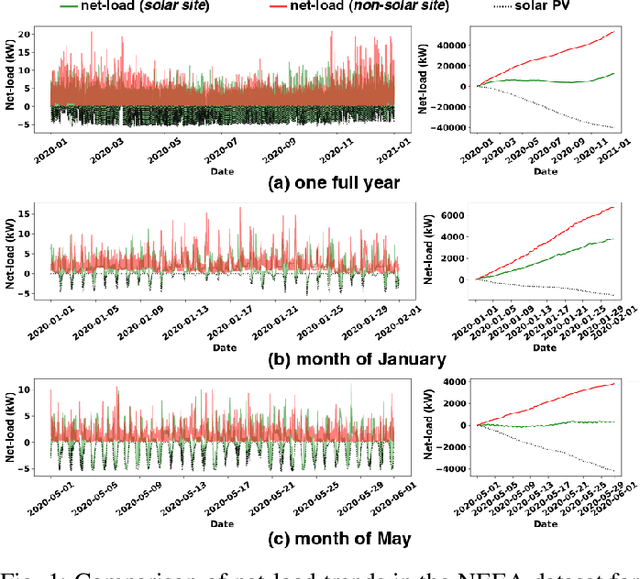Andy Eiden
Clustering Interval Load with Weather to Create Scenarios of Behind-the-Meter Solar Penetration
Mar 08, 2024Abstract:Forecasting load at the feeder level has become increasingly challenging with the penetration of behind-the-meter solar, as this self-generation (also called total generation) is only visible to the utility as aggregated net-load. This work proposes a methodology for creation of scenarios of solar penetration at the feeder level for use by forecasters to test the robustness of their algorithm to progressively higher penetrations of solar. The algorithm draws on publicly available observations of weather \emph{condition} (e.g., rainy/cloudy/fair) for use as proxies to sky clearness. These observations are used to mask and weight the interval deviations of similar native usage profiles from which average interval usage is calculated and subsequently added to interval net generation to reconstruct interval total generation. This approach improves the estimate of annual energy generation by 23\%; where the net generation signal currently only reflects 52\% of total annual generation, now 75\% is captured via the proposed algorithm. This proposed methodology is data driven and extensible to service territories which lack information on irradiance measurements and geo-coordinates.
KPF-AE-LSTM: A Deep Probabilistic Model for Net-Load Forecasting in High Solar Scenarios
Mar 05, 2022



Abstract:With the expected rise in behind-the-meter solar penetration within the distribution networks, there is a need to develop time-series forecasting methods that can reliably predict the net-load, accurately quantifying its uncertainty and variability. This paper presents a deep learning method to generate probabilistic forecasts of day-ahead net-load at 15-min resolution, at various solar penetration levels. Our proposed deep-learning based architecture utilizes the dimensional reduction, from a higher-dimensional input to a lower-dimensional latent space, via a convolutional Autoencoder (AE). The extracted features from AE are then utilized to generate probability distributions across the latent space, by passing the features through a kernel-embedded Perron-Frobenius (kPF) operator. Finally, long short-term memory (LSTM) layers are used to synthesize time-series probability distributions of the forecasted net-load, from the latent space distributions. The models are shown to deliver superior forecast performance (as per several metrics), as well as maintain superior training efficiency, in comparison to existing benchmark models. Detailed analysis is carried out to evaluate the model performance across various solar penetration levels (up to 50\%), prediction horizons (e.g., 15\,min and 24\,hr ahead), and aggregation level of houses, as well as its robustness against missing measurements.
 Add to Chrome
Add to Chrome Add to Firefox
Add to Firefox Add to Edge
Add to Edge